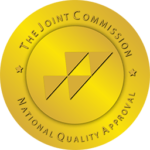Xylazine, widely recognized as the “zombie drug,” has emerged as a significant public health concern across various regions worldwide. Originally developed as a sedative and analgesic for veterinary use, its misuse among humans has led to profound health crises and social issues. This article delves deep into the multifaceted impact of xylazine, exploring its properties, the ramifications of its misuse, and the urgent need for coordinated intervention strategies involving drug rehabilitation and stringent policy frameworks.
What is Xylazine?
Xylazine is a potent sedative that is used primarily in the veterinary field to manage pain and facilitate procedures in large animals such as horses and cattle. Its classification as a non-opioid sedative and analgesic underscores its significant effect on the central nervous system, leading to a state of sedation deep enough that it has earned the moniker of “zombie drug” due to the zombified state it induces in humans. This nickname also highlights the drug’s dangerous allure in the illegal drug market, where it is often used to extend or enhance the effects of opioids, thereby increasing their potency but also their risk profile.
The Spread of Xylazine in the Drug Market
The infiltration of xylazine into the illegal drug market represents a troubling trend in substance abuse, particularly as an adulterant in opioid drugs such as heroin and fentanyl. The addition of xylazine to these drugs enhances their narcotic effects but also significantly amplifies the risk of severe side effects and fatal overdoses. Statistics from emergency room reports and drug seizure data across the United States indicate a sharp increase in the prevalence of xylazine in urban drug markets, compelling a reevaluation of strategies to combat its spread.
Health Risks Associated with Xylazine
Xylazine’s impact on human health is severe and multifaceted. Initially, users may experience intense sedation, severely depressed respiration, and reduced heart rate, which can be deadly without medical intervention. Over time, chronic use of xylazine can lead to a host of detrimental health effects, including persistent skin ulcers, severe infections due to prolonged immobility, and extensive organ damage. These health risks necessitate urgent medical attention and highlight the need for increased healthcare resources to manage and mitigate the effects of this drug.
Xylazine Mixed With Other Drugs
The combination of xylazine with other drugs, particularly opioids, has become a significant concern in the landscape of drug abuse. When xylazine is mixed with substances like heroin, fentanyl, or even cocaine, the resulting effects can be particularly hazardous and often increase the risk of severe health complications and fatal overdoses.
Dangerous Synergies
Xylazine, primarily used for its sedative and muscle-relaxant properties in veterinary practices, when used in conjunction with opioids, intensifies the central nervous system depression. This can lead to an enhanced euphoric effect, which is often sought after by users. However, this potentiation of effects comes at a high cost. The combination significantly increases the risk of respiratory depression, a condition where breathing becomes dangerously slow and ineffective, potentially leading to coma or death.
Increased Overdose Risk
One of the most alarming risks of mixing xylazine with other drugs is the increased likelihood of overdose. Because xylazine is not an opioid, it does not respond to naloxone (Narcan), the medication commonly used to reverse opioid overdoses. This makes treating overdoses complicated and hazardous, as the typical first-line defense is ineffective against the xylazine component of the overdose. Emergency medical professionals often have to manage these cases with supportive care, which may not always be sufficient if the overdose is severe.
Compounded Withdrawal Symptoms
Users who habitually use drug mixtures containing xylazine may experience more severe and complex withdrawal symptoms when trying to quit. These symptoms can be both physical and psychological, including but not limited to severe anxiety, muscle pain, respiratory distress, and depressive episodes. The physical dependency developed can be more challenging to break due to the intense withdrawal symptoms, often requiring specialized medical detox programs.
Treatment Options for Xylazine Addiction
Treating addiction to xylazine presents unique challenges and requires a multifaceted approach tailored to the specific needs of the individual. Given the potent sedative effects of xylazine and its frequent combination with other drugs, such as opioids, a comprehensive treatment plan is essential for effective recovery and rehabilitation.
Detoxification and Medical Supervision
The first step in treating xylazine addiction is typically detoxification, which should be conducted under strict medical supervision. Due to the severe withdrawal symptoms associated with xylazine, which can include intense anxiety, tremors, hypertension, and potentially life-threatening respiratory distress, a medically supervised detox can ensure the safety and comfort of the patient. Medical professionals can administer medications to manage withdrawal symptoms and monitor the patient’s vital signs continuously to prevent complications.
Pharmacological Support
While there is no specific antidote for xylazine overdose or addiction, certain medications may be used to alleviate specific symptoms. For example, medications that manage blood pressure and respiratory function can be crucial for individuals withdrawing from xylazine. Additionally, when xylazine is used in conjunction with opioids, medications such as buprenorphine or methadone may be employed to treat opioid dependence concurrently, although these do not directly address xylazine use.
Behavioral Therapies
Behavioral therapies are an integral part of the addiction treatment process, particularly for substances like xylazine that affect the central nervous system and alter mood and behavior. Cognitive-behavioral therapy (CBT) is commonly used to help patients develop coping strategies to deal with cravings and to change thought patterns that lead to drug use. Additionally, motivational interviewing can be effective in bolstering a patient’s motivation to change and engage with other treatment modalities.
Support Groups and Counseling
Support groups and individual counseling are critical for ongoing support during and after the initial treatment phase. These resources provide a platform for sharing experiences and challenges, thereby reducing feelings of isolation and strengthening the recovery community. Counseling, whether individual or group, offers emotional support and helps address underlying issues that may contribute to addiction, such as mental health disorders or traumatic experiences.
Get Help at True Self Recovery
The challenges posed by xylazine are complex and require a coordinated approach from all sectors of society. From healthcare providers to law enforcement, policymakers to community leaders, a unified strategy is essential to address the immediate dangers and prevent the future spread of xylazine use. As awareness grows and more resources are directed towards this issue, there is hope that the tide can be turned against the misuse of the so-called “zombie drug.”
If you or a loved one are struggling with any form of substance abuse, get in touch with True Self Recovery. Our treatment facility is dedicated to helping individuals overcome the challenges of addiction.
FAQs
What exactly is xylazine, and why is it dangerous?
Xylazine is a sedative and analgesic originally approved for veterinary use, particularly in large animals such as horses and cattle. It is dangerous for humans because it depresses the central nervous system, leading to severe respiratory depression, bradycardia, and even potentially fatal outcomes. Its misuse can also cause long-lasting ulcers and severe skin infections due to its tendency to induce prolonged periods of immobility.
How does xylazine affect the body in the short and long term?
In the short term, xylazine can cause symptoms such as profound sedation, lowered blood pressure, slowed breathing, and temporary paralysis. Long-term effects include the risk of serious infections, skin ulcers, organ damage, and psychological dependence. The drug’s impact can be exacerbated when mixed with opioids, increasing the risk of overdose and death.
What are the signs of xylazine use or addiction?
Signs of xylazine use may include sudden and extreme drowsiness, difficulty waking, slowed breathing, and unresponsiveness. Physical signs can include fresh or healing skin ulcers and abscesses. Those addicted might show a continuous pattern of seeking the drug despite physical and social consequences, withdrawal symptoms when not using, and an inability to stop using the drug even when they want to.
What should you do if you suspect someone is using xylazine?
If you suspect someone is using xylazine, it’s important to approach the situation with care and empathy. Encourage them to seek professional medical help from addiction specialists or contact emergency services if they are in immediate danger. Supporting them in finding appropriate treatment and recovery resources, including detox and rehabilitation programs that have experience with xylazine, is also vital.
Why is it called the zombie drug?
Xylazine is nicknamed the “zombie drug” due to its severe sedative effects, which can render users extremely lethargic and physically incapacitated, resembling a zombie-like state. This nickname also reflects the drug’s ability to cause skin ulcers and infections from chronic use, enhancing the zombie-like appearance of individuals affected by its long-term effects.



